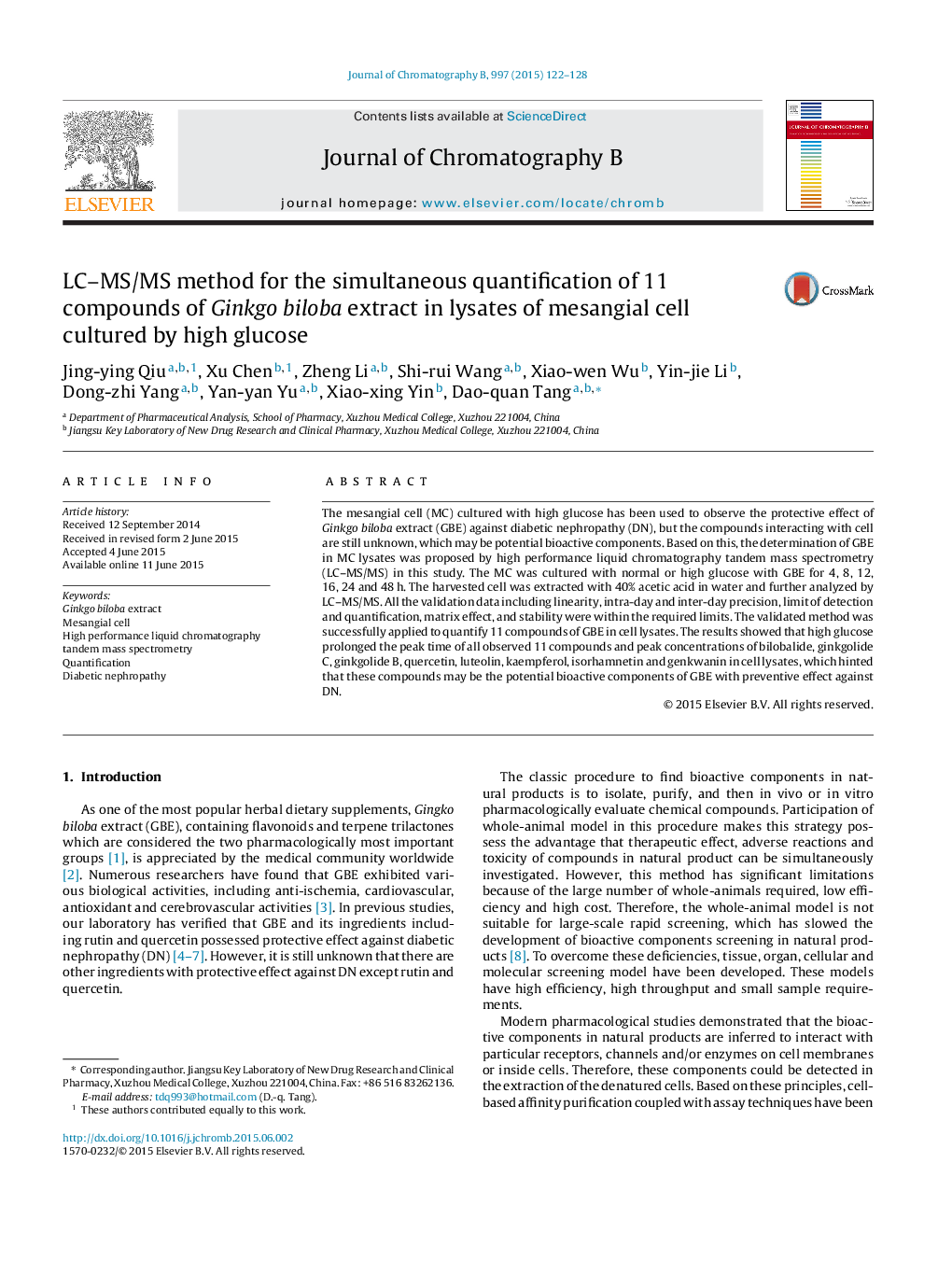| Article ID | Journal | Published Year | Pages | File Type |
|---|---|---|---|---|
| 7617007 | Journal of Chromatography B | 2015 | 7 Pages |
Abstract
The mesangial cell (MC) cultured with high glucose has been used to observe the protective effect of Ginkgo biloba extract (GBE) against diabetic nephropathy (DN), but the compounds interacting with cell are still unknown, which may be potential bioactive components. Based on this, the determination of GBE in MC lysates was proposed by high performance liquid chromatography tandem mass spectrometry (LC-MS/MS) in this study. The MC was cultured with normal or high glucose with GBE for 4, 8, 12, 16, 24 and 48Â h. The harvested cell was extracted with 40% acetic acid in water and further analyzed by LC-MS/MS. All the validation data including linearity, intra-day and inter-day precision, limit of detection and quantification, matrix effect, and stability were within the required limits. The validated method was successfully applied to quantify 11 compounds of GBE in cell lysates. The results showed that high glucose prolonged the peak time of all observed 11 compounds and peak concentrations of bilobalide, ginkgolide C, ginkgolide B, quercetin, luteolin, kaempferol, isorhamnetin and genkwanin in cell lysates, which hinted that these compounds may be the potential bioactive components of GBE with preventive effect against DN.
Keywords
Related Topics
Physical Sciences and Engineering
Chemistry
Analytical Chemistry
Authors
Jing-ying Qiu, Xu Chen, Zheng Li, Shi-rui Wang, Xiao-wen Wu, Yin-jie Li, Dong-zhi Yang, Yan-yan Yu, Xiao-xing Yin, Dao-quan Tang,
